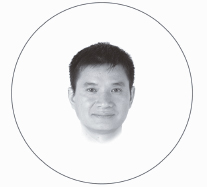
Open your eyes and become aware of the outer world.
Who Am I?
Siddhartha’s Problem
Siddhartha Gautama was an Indian prince who lived in the sixth century BCE. He was handsome, rich, married to a beautiful, loving wife, and next in line to inherit the throne. By all accounts he was a wise, loving, vital man leading a happy life within the protective palace walls. But one day he ventured beyond the gates and was shocked by what he witnessed: a wrinkled old man, another man suffering from a terrible disease, and a rotting corpse.
The prince had never seen so much misery, and these experiences startled him. A profoundly troubling thought began to torment him: I may be happy today, but someday I too will grow old, become sick, and die. He couldn’t stop thinking about his impermanence and the notion that someday everything dear to him—his looks, health, wealth, family, and power—would be taken from him, and that worst of all, he was totally helpless in stopping that inevitability. Although Siddhartha was only twenty-nine years old, he realized what many people don’t see clearly until the end of their lives: that eventually we run out of time and death will rob us of all our accomplishments, possessions, and even our happiness.
The prince abandoned his privileged, happy life in search of an answer to the “problem” of death. He left behind his wife, riches, fame, and the power that so many others coveted, and spent years living meekly in the jungle studying with various spiritual masters and undergoing numerous hardships. He learned various kinds of practices and experienced many blissful states, but no matter how spiritually accomplished he became, the problem of death continued to haunt him.
The former prince became extremely frustrated. He hadn’t made any headway in resolving the issue since leaving the palace, and he felt like a complete failure. He didn’t know where else to turn for guidance. Exasperated, he sat down under the bough of a bodhi tree and vowed not to get up until he figured out the answer. Days and weeks passed and, true to his vow, he remained under the tree. He struggled steadfastly against many challenges and temptations—and then one day it suddenly happened.
Sitting under that tree, Siddhartha was enlightened. He realized his true nature.
After this experience, he wandered the countryside profoundly transformed. People became drawn to his radiant, peaceful presence.
“Are you a god?” they asked him.
“No,” he replied.
“Are you a wizard?”
“No.”
“Are you a man?”
“No.”
“What are you then?” they inquired.
“I am awake,” he replied.
These locals started to call Siddhartha Buddha, which means “the awakened one,” and the name stuck.
Before “waking up,” the former Prince had been afflicted by the intractable problem of death, which had eroded his worldly happiness. But when he became the Buddha, that nagging problem evaporated like a drop of water dancing on a sizzling skillet. After he attained enlightenment, the existential anguish that had tormented him was replaced by a profound and unshakable peace that no one could take away from him, not even the Angel of Death.
The Buddha had attained his goal—absolute happiness—and he spent the rest of his life systematizing a set of guidelines to help others awaken and become Buddhas just like him. Over time, stories about the Buddha were recorded, his sermons were written down as sacred texts, his philosophy was ritualized, and a religion emerged.
Buddhist scriptures are full of beautiful insights, and its ceremonies are deeply symbolic, but we are well served to remember that these embellishments are merely fingers pointing the way to the Buddha’s experience under the bodhi tree. They are not a substitute for the core teaching of the Buddha—enlightenment—which can only be realized when we also realize our true nature.
Xiao Yao made this point explicitly clear. Although he was a devout Buddhist monk well versed in Buddhist theology, he never indoctrinated me into the religion. My master was wise. Life conditions during the Cultural Revolution did not permit me the luxury of adopting any religious belief, so he sidestepped the traditional indoctrination and religious formalities that might have endangered me and my family, and instead simply led me directly to the experience of enlightenment.
To this day I appreciate the distinction he made between being a “Buddhist” and being a “Buddha.” The former involves embracing the religion while the latter alludes to a universal experience that anyone can have regardless of religious affiliation. One can become a Buddhist Buddha, Hindu Buddha, Jewish Buddha, Christian Buddha, Muslim Buddha, or even an atheist Buddha.
Now I would like to offer you a taste of the enlightenment experience too. You may be wondering whether you are ready, or even worthy of it at this stage of your spiritual development, but let me reassure you, you are—definitely.
If we compare your true nature to a white canvas colored over with countless ideas, beliefs, and philosophies by the paintbrush of your mind, becoming a Buddha simply involves recognizing the original underlying “whiteness” of your being—your fundamental nature—which is ever present and transcends all the colorful impressions layered over it. Every human being already possesses a Buddha nature. That is the reason why you too can realize the experience Siddhartha attained under the bodhi tree, at any time, in any place. In a very real sense, you are sitting under that same tree right now.
So how would you like to dip your toes in those waters? Would you like to awaken your true and unshakable nature and glimpse your own Buddhahood? If so, then take the first step toward that goal by sincerely asking yourself, Who am I? This is the most basic and straightforward question you can ask about yourself. It is also the most difficult to answer.
Who are you, really?
If we asked a group of experts, they would size you up in different ways using their specific measuring sticks. A biologist might reduce you down to your genes and blood type, a psychologist to your family history and neuroses, and a sociologist to the life conditions that shape your culture and environment. Admittedly, each of these perspectives is partially right, but most of us would rightfully suspect that ultimately, we are constituted of something more fundamental than just our physical body, conditioned mind, and internalized social programming. So even if we collected facts about you from every field of knowledge and lumped all that information into a huge database, we still wouldn’t be able to put our finger on that elusive “something.”
So let me ask you again: Who are you, really?
We all possess a relative identity made up of a collection of personalities that we invoke to function in society. Over the course of any given day, we shuffle that deck of cards repeatedly as we assume different roles: brother, sister, child, parent, lover, spouse, friend, employer, employee, student, mentor, and many, many others.
Often we become completely identified with one of the expressions of our relative identity, mistaking it for our true nature. Consider the business executive who stakes his whole identity on his title. He truly believes that he really is who his business card says he is. Or consider the wife so fully embedded in her marriage that she is totally identified with her role as a spouse. While there is nothing inherently wrong with appreciating our position at work or being deeply committed to a relationship, we should be extremely wary of giving absolute status to any one role we play in our daily lives, no matter how meaningful it might be.
We should also be wary of “losing” our true nature by projecting that innermost identity onto a social group like a sports team, an ethnic minority, a religious institution, a political organization, an exclusive clique, a particular socioeconomic class, or even a noble, humanistic cause. Ultimately, we are much more than any one of these affiliations.
Siddhartha had happily identified with his social role as prince until the steely face of his own inevitable mortality fractured that perspective. His great quest for the unshakable truth stemmed from his realization that eventually all the attachments formed in the relative world—the everyday world in which our personal lives play out—will necessarily come to an end. The executive may one day be fired or retire, and the wife’s husband may leave her or die. And if both the executive and the wife staked their innermost self on those fleeting roles, they would suffer extreme disappointment.
From the Buddha’s perspective, anyone who embraced a worldly bond as the form of their ultimate nature was a victim of mistaken identity, and that blunder would eventually lead to a terrible letdown. And as the Buddha walked around the countryside after his enlightenment, it became evident that nearly everyone he encountered was exclusively identified with some social role or another. Hardly anyone had an inkling about their true nature. It was as though people were walking around mistaking their hats for their heads.
This situation prompted the Buddha to instruct his followers on how to achieve enlightenment, since by helping people even just glimpse their own Absolute Self, he was offering them a life raft in which to escape their sea of suffering.
The Buddha had a great deal of compassion for the irony of the human condition. If he could speak to you now, he would tell you that your own Absolute Identity is not an exotic, unattainable object that exists in a faraway land. On the contrary, he would impart the radically simple notion that your Absolute Identity—your true nature—is so close by that it is very, very easy for you to miss.
So, who are you really?
Plain, everyday, moment-to-moment awareness! Yes, it is that simple.
When was the last time you contemplated your own awareness? For many of us, the answer is never. So let’s delve into the matter of our own Absolute Identity in order to make it more tangible and concrete.
The most notable feature of awareness is that it is not subject to any kind of change over time. When you were a baby, you were aware of the milk bottle; as a child, you were aware of your toys; as a teenager, you were aware of your friends; as an adult, you became aware of your responsibilities; and as an elder, you become increasingly aware of your own mortality. While the forms of awareness occupying your mind change constantly like the weather, awareness remains as constant as the sky.
If we had to distill the Buddha’s core teaching into a bumper sticker, it might read, Everything that “is” arises in awareness. The idea seems almost trivial conceptually, but those men and women who fully embody its meaning claim that being established in our Absolute Identity—being continually immersed in pure awareness—is itself a radically monumental experience. But in all fairness, we must also ask, if this experience is so special and so simple, why have so few individuals followed in the footsteps of the Buddha?
Here is one answer: Awareness is inconspicuous. It is like the movie screen you never noticed, but on which you’ve already watched ten thousand films. Think about it. Every experience you ever had was projected on this invisible, unassuming screen of awareness. The best of times, the worst of times, and everything in between happened in awareness. This very sentence is arising in your awareness right now! And any “crinkle” in awareness would disrupt the flow of events just like a distracting blotch on a movie screen.
The distinguishing characteristic, of awareness is that it has no distinguishing characteristic, and its mute omnipresence makes it easy to miss. That is why the awareness of awareness has eluded the grasp of so many bright, inquisitive intellects like the hologram of a slippery fish. We could live to be a hundred years old, travel the world, read hundreds of books, meet thousands of people, and never once notice the common thread of awareness weaving through the whole drama.
Fortunately, once we understand this idea—as you just have—we inadvertently take a giant leap forward toward our own enlightenment. And the good news is that we don’t have to go to India, China, or anywhere else to awaken our awareness. It can happen to you right now, wherever you are, since awareness is always and forever. And you don’t have to buy into any strange ideas or religious beliefs to become enlightened since your Absolute Identity—the pure awareness that constitutes your innermost nature—transcends all the productions of the mind.
Many different traditions acknowledge the moment of enlightenment and allude to it by different names such as Samadhi, Satori, Self-realization, Gnosis, Illumination, Divine Union, and Nirvana. And they also refer to pure awareness—or our Absolute Identity—through impersonal names like the Void, Emptiness, Infinity, or the Godhead, and more personal ones like your Original Face or the Self.
In order to keep all our terminology manageable, we will continue to refer to the experience of realizing our true nature as enlightenment, and to our true nature as Absolute Identity, awareness, or infinity with the understanding that all these terms refer to the same underlying reality. With that clarification out of the way, let’s now edge a step closer toward a real taste of enlightenment by considering the ways that you might have already encountered your true nature without having been properly introduced.
Now and then we unwittingly experience momentary enlightenment without paying much attention. Since awareness is such a constant, unwavering feature of our ordinary consciousness, when we get a pure “hit” of it—whenever our awareness is unadulterated by any thoughts or feelings—we barely notice, though the experience stands out as special.
Ponder those magical times when you let go of the heavy mental and emotional baggage you normally lug around. At those times your relative identity unhinged momentarily, and for an instant you were liberated and felt like a peaceful point of consciousness floating through timeless, formless space.
Perhaps this happened as you gazed up at the summer constellations from a grassy knoll, watched frothy waves rolling in at the seashore, or were awakening from a dream. If someone had entered your field of awareness at that instant and asked you your name, you would not have known it. The self is literally nameless. You would have had to “pull” yourself together again and reestablish one of your relative identities before remembering.
That peaceful, timeless, vast spaciousness that constitutes our Absolute Identity is always there. But since our mind is usually “dressed up” in one role or another, we don’t ever really notice the naked awareness that actually wears those worldly disguises. During our waking hours, our minds are busy deftly juggling roles in the endless labyrinth of the relative world, and those roles even follow us into our dreams.
The one time we drop the contents of our minds like a hot potato is when we become totally unconscious during deep, dreamless sleep. That is the one occasion when most of us unwittingly come face to face with our Absolute Identity, and when we are confronted with our own impending mortality.
An old woman lies on her deathbed. She knows that in a few hours she will be gone. She looks down at her saggy arms and blemished skin. She touches her face. Wrinkles washed away her beautiful, chiseled features long ago. She feels a tinge of remorse as she bids her body farewell. Her connection to the relative world is weakening, and her identification with the many roles she embodied in her lifetime is receding. But instead of experiencing fear as this detachment unfolds, she is graced with a new experience. A vast spaciousness opens up around her: her dying body, her bed, the bunches of flowers on the night table, the room, and indeed the whole universe all fall into this sweeping hole of clear light.
She looks around incredulously, like a baby staring at the world for the very first time, only what delights her are not the colorful flowers and objects all around, but rather the immense peacefulness in which they are arising. Having realized her true nature as infinity, she bursts out laughing, overjoyed.
A nurse rushes to her bedside.
“Are you all right?” she asks with concern.
“Never better,” the dying woman replies, her eyes sparkling.
“Do you want some medication to ease the pain?”
“No, thank you. I feel perfectly fine.”
The nurse looks at her, confused.
The woman spends her last hours basking peacefully in that radiant light. Later that night, after her final exhalation, only a faint trace of her enlightenment remains, the slight “Buddha smile” on her lips.
You don’t have to wait until your final hours to awaken your true nature. You can become enlightened long before that happens. The following exercise, Awakening Awareness, is intended to initiate that process. Practice it often and you will deepen your own self-awareness. With persistence and grace, perhaps someday you too will become a Buddha, abiding in absolute peace even as you move through the spellbinding worlds of work, friends, and family.
EXERCISE 10 Awakening Awareness
Awakening Awareness can be practiced standing, sitting, or lying down. This is an exercise you can do anytime, anywhere, for any length of time, even while you are waiting for an elevator or at the checkout counter. The more you practice it, the easier it becomes to integrate Awakened Awareness into your daily activities until eventually it becomes as natural as walking or breathing.
The exercise is divided into three parts.
1. Sit upright comfortably in a chair with your hands resting on your lap. Open your eyes and become aware of the outer world. This is the world that flows into awareness through the physical senses. Concentrate on the sights, sounds, smells, and the sense of space around you. Continue doing this for a few seconds.

Open your eyes and become aware of the outer world.
2. Now close your eyes and become aware of your inner world. This is the world that flows into awareness through the inner senses. Concentrate on the feelings and images floating through your mind, and even on the sense of time flowing by. Continue doing this for a few seconds.
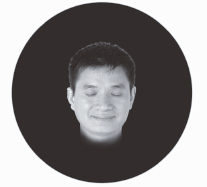
Close your eyes and become aware of your inner world.
Part 2
3. Now with your eyes still closed, focus your attention outward once again on the qualities of the outer world. This state of consciousness feels like being in a dark forest on a dark night while your senses extend like antennas. Continue doing this for a few seconds.
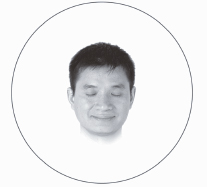
Close your eyes and become aware of the outer world.
4. Next open your eyes and focus your attention on the qualities of your inner world. This state of consciousness feels like being in a daydream in which your eyes are open but your senses are introverted. Continue doing this for a few seconds.
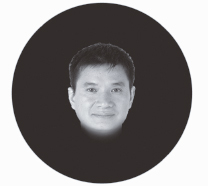
Open your eyes and become aware of your inner world.
Part 3
5. With your eyes still open, now become aware simultaneously of both your inner world and the outer world. Become aware of both objective and subjective experiences arising in awareness. Concentrate on the spacious quality of awareness for a few seconds.
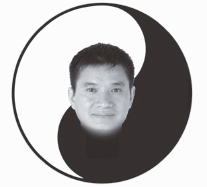
Open your eyes and become aware of your inner world and the outer world.
6. Then close your eyes while maintaining an awareness of awareness of both your inner world and the outer world. Realize that all experiences arise in the light of awareness. Concentrate on the formless quality of awareness for a few seconds.
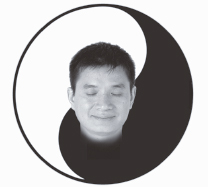
Close your eyes and become aware of your inner world and the outer world.
7. Now let go of all experience. Allow your inner world and the outer world to dissolve into nothingness. Become “aware” of awareness itself. Awaken your awareness. Realize that Awakened Awareness is your true nature.

Realize that Awakened Awareness is your true nature.
Picture a room divided by an opaque, velvety veil. Half the room is lit and the other half, where you stand, is plunged in darkness. Each time you awaken your awareness, the veil is lifted a bit. Gradually, light amplifies and the darkness fades until finally the entire room is inundated with beautiful light: enlightenment!
Continue to practice this exercise, and that is what you can look forward to.
You may be wondering, how would my relationship to the world change if I became a Buddha? A Buddha may look like an ordinary human being, but inwardly he or she is experiencing a totally different kind of reality. The vision of the world through an unawakened perspective and the vision of that same world through an awakened perspective are as different as Newton’s and Einstein’s models of the universe. So how does a Buddha experience reality? How does enlightened awareness experience the relative world?
Let’s find out.